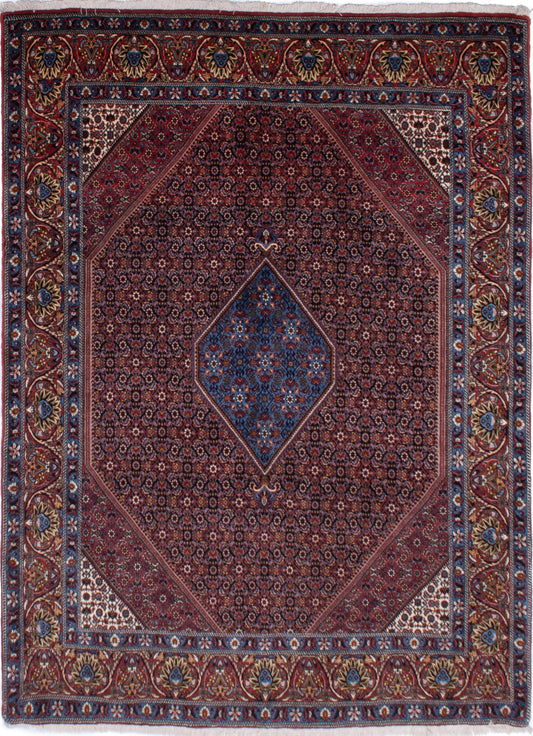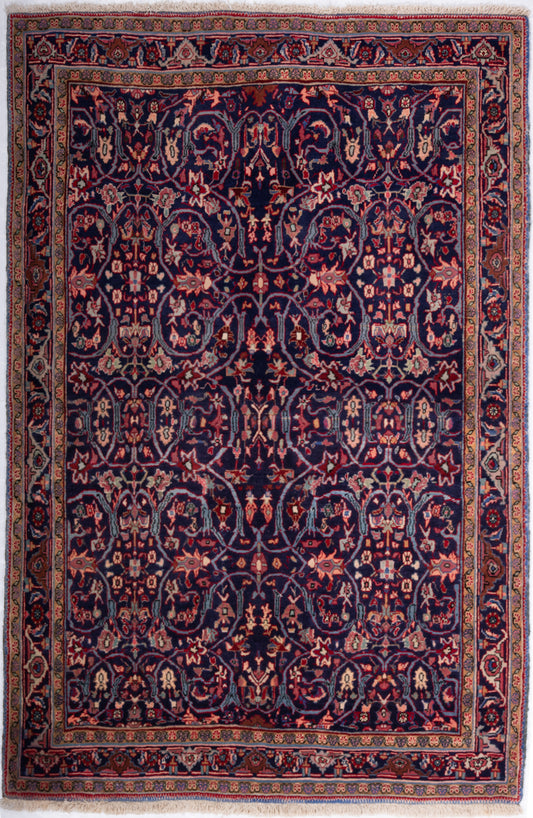Bijar Rug History & Origin Guide
Situated in Iran's Kurdistan province, the quaint town of Bijar boasts a long-established history of crafting exceptional handmade rugs. Often dubbed the "Iron Rugs of Persia," Bijar rugs are admired for their intricate designs and remarkable durability. Join us as we reveal the fascinating heritage, artistry, and uniqueness of these captivating creations. Don't miss the chance to explore our carefully curated collection of Bijar rugs.
Bijar: A Rich Rug Weaving Tradition
The beginnings of rug weaving in Bijar date back to the 16th century. The town's predominantly Kurdish population has played a significant part in nurturing this artistic tradition. Over the centuries, skilled weavers from the region have refined their techniques, producing the stunning Bijar rugs we admire today, celebrated for their superb quality and workmanship.
Signature Features of Bijar Rugs
Renowned for their extraordinary resilience, Bijar rugs have earned the nickname "Iron Rugs of Persia." Their remarkable robustness stems from a unique weaving method, in which the weft strands are compressed tightly between rows of knots. This results in a dense, heavyweight rug that can stand the test of time.
Bijar rugs are typically characterised by their intricate patterns, frequently displaying geometric and floral motifs inspired by the region's rich cultural heritage. The designs are meticulously woven using a diverse palette of colours, with shades of red, blue, and ivory featuring prominently. The dyes are obtained from natural sources, ensuring that the colours remain vibrant and long-lasting.
Materials and Weaving Techniques
High-quality wool sourced from local sheep is the primary material used in crafting Bijar rugs. The weavers employ the Persian (asymmetrical) knotting technique to create the intricate designs found in these rugs. The knot density of a Bijar rug typically range from 100 to 350 knots per square inch, contributing to their luxurious feel and durability.
Discovering Bijar and Its Attractions
Visitors to Bijar can immerse themselves in the town's rich cultural history and experience its warm hospitality. While Bijar may not have as many tourist attractions as other Iranian cities, the town's traditional bazaars offer an authentic glimpse into the local way of life. A visit to these bustling markets provides an opportunity to observe skilled weavers at work and even purchase a genuine Bijar rug as a cherished memento.
Best Time to Visit
The ideal time to visit Bijar is during spring (April to June) and autumn (September to November), when the weather is mild and pleasant. These seasons are perfect for exploring the town and its surrounding countryside, as well as attending local events that showcase the region's vibrant culture.
Buy Bijar Rugs
Are you ready to bring a piece of Bijar's rich history and artistry into your home?
View our exquisite collection of Bijar rugs today.
Browse Our Current Selection of Bijar Rugs
-
Semi-Antique Persian Bijar Rug
Regular price £10,175.00Regular priceUnit price / per -
 Sold
SoldIndian Bijar Rug
Regular price £1,595.00Regular priceUnit price / per -
Persian Bijar Rug
Regular price £1,295.00Regular priceUnit price / per -
Persian Bijar Hall Runner Rug
Regular price £3,245.00Regular priceUnit price / per -
Persian Tekab Bijar Kork Wool & Silk Rug
Regular price £7,125.00Regular priceUnit price / per -
Persian Bijar Rug
Regular price £1,595.00Regular priceUnit price / per -
Persian Bijar Rug
Regular price £1,195.00Regular priceUnit price / per -
Persian Bijar Rug
Regular price £1,195.00Regular priceUnit price / per -
Persian Bijar Rug
Regular price £1,795.00Regular priceUnit price / per -
Persian Bijar Rug
Regular price £695.00Regular priceUnit price / per -
 Sold
SoldPersian Bijar Rug
Regular price £475.00Regular priceUnit price / per -
Persian Bijar Rug
Regular price £245.00Regular priceUnit price / per












